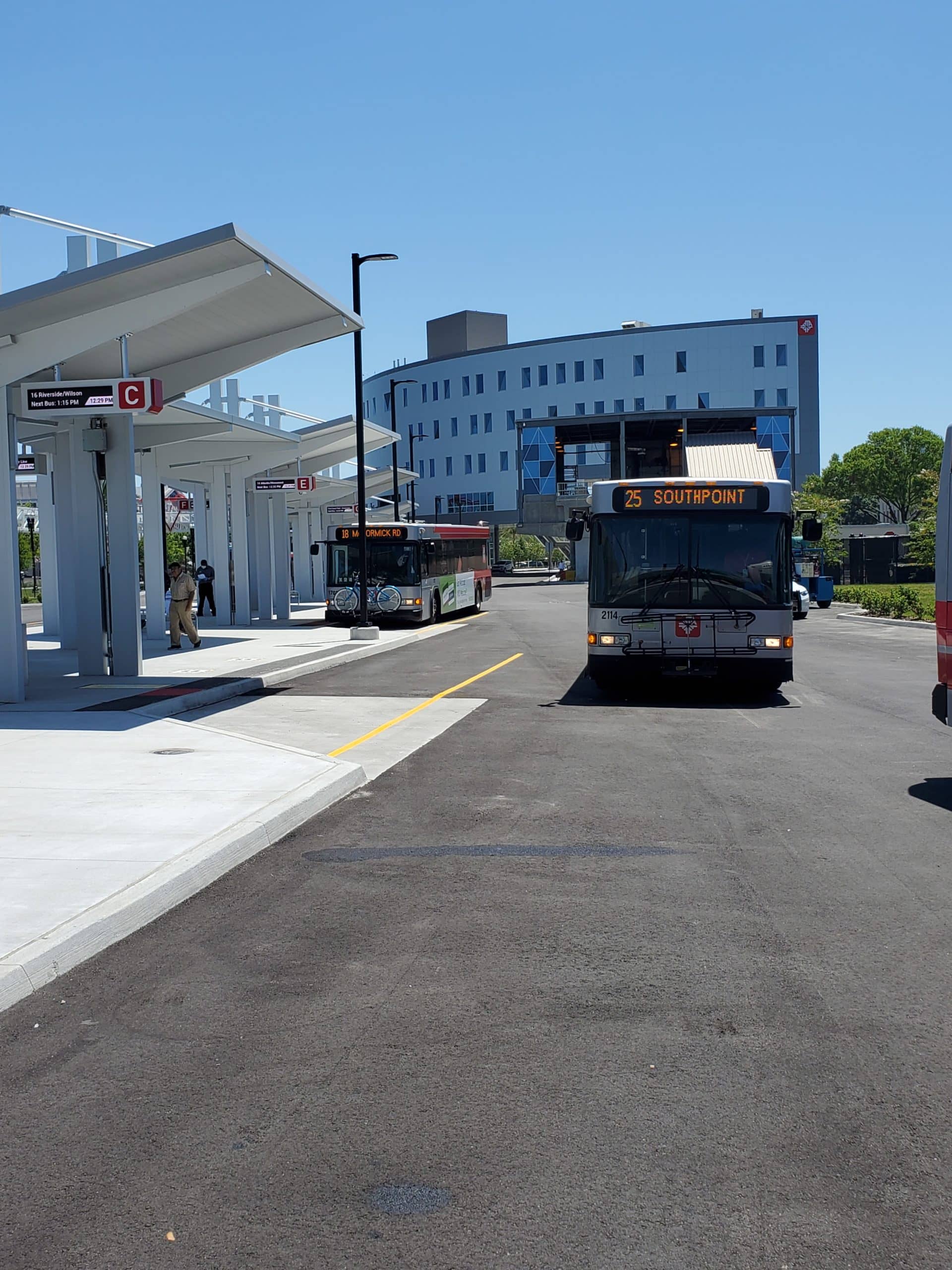
The Jacksonville Transportation Authority’s main public bus hub relocation was completed Monday at a new transfer station that brings the old station up to par with current design standards.
“It’s clean and it’s better organized,” Charles Adams said of the new Jacksonville Regional Transportation Center on LaVilla Center Drive as he sat on a bench waiting for a transfer ride aboard a bus. “It’s convenient for me.”
The new hub is about a mile west of the original hub at Rosa Parks Station. But the new hub is built around — and through — the new five-story JTA headquarters designed to serve as a regional transportation focal point.
The new JTA headquarters is designed to handle up to about 40,000 people per day, 29,000 more than the original. It will serve as a central transportation launching point for many travelers on the First Coast.
“There’s a great deal more connected to this” new hub in downtown Jacksonville, said JTA CEO Nat Ford.
“The large percentage of jobs are in Duval County. However, you have Nassau, St. Johns, Baker and Clay counties… that are significantly increasing in population in the next 10 years,” Ford said.
The population in the outer counties is expected to increase by as much as 40% in some areas.
Clay and Nassau counties already have JTA routes that flow into the city. The opening of the new hub Monday was supposed to coincide with new JTA express routes stretching into not only St. Johns County but Baker County as well. But Ford said the launch of those new routes had to be postponed because of the coronavirus outbreak.
The new routes will likely begin sometime in the summer, depending on the status of the COVID-19 outbreak, he said.
The new hub includes the Skyway Express rail people mover that runs through openings in the building, traversing the north and south banks of downtown. Ford said that will eventually involve automated carriages.
The JTA hub has a walkable bridge connecting to the Greyhound Bus station just north of the headquarters.
“You’ve got this major hub of inner city and Duval County operation mixed with the rest of the Northeast Florida region,” Ford said. “It just makes sense because regions compete for economic competitiveness. It’s not just a city.”
The goal is to create jobs and keep travel affordable.
“We create the ability for them to be gainfully employed. They’re not limited to the job opportunities in their immediate neighborhood,” Ford said.
The complex cost about $60 million to build. Construction began in 2017.
Multiple vacant lots around the JTA headquarters will likely be developed.
“It’s essentially our Grand Central Station for Northeast Florida,” Ford said. “It is not just a place to transfer. It’s going to be a destination… . It’s a spark plug.”



